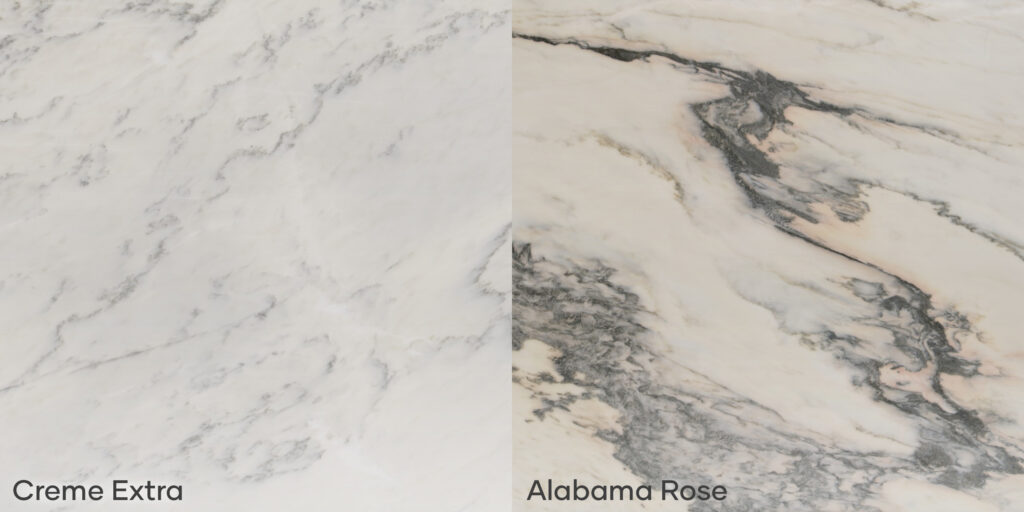Veining in natural stone is what makes each piece of marble unique. These veins are formed by crystallized minerals deposited by water that ran through the stone and evaporated. Because different types of minerals are left in the stone during this process, veining can come in all different colors. These bands of minerals can vary from light and subtle to heavy and dramatic.

Our Crème Extra Collection features light grey veining while our Alabama Rose Collection features dark green veins formed by magnesium and silica.
Types of Veins
There are several different kinds of veins, but the most common are Crack-Seal Growth Veins and Open-Space Fill Veins. Open-Space Filled veins have the appearance of filling in the available open space, hence the name. Because these veins occur under a lower pressure, the material often is softer than other materials.
Crack-Seal Growth veins occur when the material fractures allowing water to fill the space and deposit minerals within the space. During this process the fractures are often recompressed sealing the veins into the material and making the material stronger. Alabama Marble’s veins are Crack-Seal Growth veins.
Cross-cut vs Vein-cut
In addition to the different types of veins, marble can also be cut in various directions. This allows the veining to be displayed in different patterns.

Blocks that are cross-cut are cut with the vein allow the patterns of veins to appear more as swirls. Vein-cut marble is cut against the grain showing the veining of the material as long, horizontal stripes. Our Vinculus Tile Collection shows the elegance of the Vein-cut.
Now that you know more about marble veining, you can decide what colors and patterns are best suited for your project. Do you prefer cross-cut or vein-cut stone? Do you like heavily veined material or light and subtle veins? Would you like a colorfully veined stone or a more neutral palette?
If you need help deciding which marble is right for your project, contact us today!
